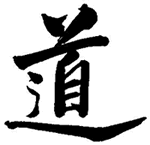
Index to English Language Translators Index to Spanish Language Translators
Green
Way Research, Valley Spirit
Grove, Gushen Grove Notebooks, Vancouver, Washington
By Lao-Tzu (Laozi, Lao Tse, Lan Dan, Li Ehr)
Legends and Development from 500 BCE - 250 CE
Old Master, Old Sage, Long-eared Wise Man, Wise Child
The Grand Supreme Elder Lord (Taishang Laojun 太上老君)
The Universally Honored One of Tao and Virtues
(Daode
Tianzun 道德天尊)

Created by Michael P. Garofalo, Green Way Research, Valley Spirit Center, Gushen Grove Notebooks, Vancouver, Washington © 2011-2021 CCA 4.0
|
Tao Te
Ching |
|||||||||
| 1 | 2 | 3 | 4 | 5 | 6 | 7 | 8 | 9 | 10 |
| 11 | 12 | 13 | 14 | 15 | 16 | 17 | 18 | 19 | 20 |
| 21 | 22 | 23 | 24 | 25 | 26 | 27 | 28 | 29 | 30 |
| 31 | 32 | 33 | 34 | 35 | 36 | 37 | 38 | 39 | 40 |
| 41 | 42 | 43 | 44 | 45 | 46 | 47 | 48 | 49 | 50 |
| 51 | 52 | 53 | 54 | 55 | 56 | 57 | 58 | 59 | 60 |
| 61 | 62 | 63 | 64 | 65 | 66 | 67 | 68 | 69 | 70 |
| 71 | 72 | 73 | 74 | 75 | 76 | 77 | 78 | 79 | 80 |
| 81 | |||||||||
History of the Tao Te Ching
In ancient China, during the Spring and Autumn Classical Period (700-480 BCE) mystical philosophers had begun formulating the principal doctrines of what is now called Philosophical Taoism (Daojia 道家). Based upon their observations of nature and human behavior they developed an informal school of thought regarding how a wise man should live his life and how to understand the world in which he lives.
By the time of Confucius (551-479 BCE), some of the members of this informal school gathered their favorite sayings, aphorisms, poems, reflections, and ideas into written form. A librarian and archivist in the royal court of Zhou, a Li Er Dan (Lao Tzu, Laozi), is reported to have written or compiled a 5,000 character manuscript around 500 BCE that is now known as the Tao Te Ching. Whether historically "true" or not, it has been commonly accepted for twenty centuries in China that Lao Tzu is the author of the Tao Te Ching.
The oldest manuscripts with versions of the Tao Te Ching, discovered by archeologists in the 20th Century, are the the Guodian Chu text on slips of bamboo (dated at 300 BCE), the Mawangdui text on silk (dated at 168 BCE), and the Mogao Caves text (dated at 270 CE).
Guodian Chu bamboo slips Mawangdui silk
The earliest commentaries on the Tao Te Ching were by Heshang Gong (circa 202-157 BCE), Yan Zun (80 BCE -10 CE), and Wang Bi (226-249 CE). According to Professor Henricks, by 50 CE the method of organizing the Tao Te Ching into 81 chapters was an accepted practice by scribes and commentators.
Early in the Han Dynasty (206 BCE - 220 CE), Lao Tzu was already considered a very wise man, and the Tao Te Ching a marvelous and profound work. Over the centuries, many people began to think of Lao Tzu as a great holy man, an Immortal, an avatar, or a divine being . The gradual process of the deification of Lao Tzu proceeded in religious Taoism (Daojiao 道敎) during this period. The Taoist leader, Zhang Daoling, claimed in 142 CE that the divine Lao Tzu had appeared to him and directed him to found the Way of the Celestial Masters, which became the first organized and popular Taoist sect. To this day, Lao Tzu is revered and worshipped as the Grand Pure One (Tàiqīng) of the Three Pure Ones (Shàngqīng (上清)) which are the three highest Taoist deities along with the Jade Emperor. Lao Tzu is equated with Daode Tianzun (道德天尊), "The Universally Honoured One of Tao and Virtues" or "The Universal Lord of the Way and its Virtue"; Taishang Laojun (太上老君), "The Grand Supreme Elder Lord"; or Tàiqīng (太清), the Grand Pure One. As with all highly respected, legendary or deified persons, there are many fascinating and fabulous stories told about the Grand Pure One, Lao Tzu.
The Tao Te Ching was first translated into English in the late 19th Century (e.g., Fredric Balfour 1884, James Legge 1891, etc.). Some English translations of the Tao Te Ching are by scholars who are experts in the Chinese language and/or the Taoist religion, and other interpretations of the text are by educated persons with a deep personal admiration for Taoist ideas. Some translations are rendered in verse and others in poetic form. Some are literal translations by Chinese linguists, while other versions are creative interpolations. Some translations are terse and direct, others are expansive and make much use of poetic license. Most translations are serious and reverential, while a few are zany and bizarre. There are many interesting commentaries in English about the Tao Te Ching; and, some fictional adaptations of Taoist ideas in English literature. The Tao Te Ching is now quite popular with readers all around the world, and has been translated over 200 times into various Western languages. It is wise for a serious student of the Tao Te Ching to read and compare many different translations and commentaries of the Tao Te Ching.
"The received Tao Te Ching is a short text of around
5,000 Chinese characters in 81 brief chapters or sections (章). There is some
evidence that the chapter divisions were later additions - for commentary, or as
aids to rote memorization - and that the original text was more fluidly
organized. It has two parts, the Tao Ching (道經; chaps. 1–37) and the Te Ching
(德經; chaps. 38–81), which may have been edited together into the received text,
possibly reversed from an original "Te Tao Ching". The written style is laconic,
has few grammatical particles, and encourages varied, even contradictory
interpretations. The ideas are singular; the style poetic. The rhetorical style
combines two major strategies: short, declarative statements and intentional
contradictions. The first of these strategies creates memorable phrases, while
the second forces us to create our own reconciliations of the supposed
contradictions. The Chinese characters in the original versions were
probably written in zhuànshū (篆書 seal script), while later versions were written
in lìshū (隷書 clerical script) and kishū (楷書 regular script) styles. Daoist
Chinese Characters contains a good summary of these different calligraphies."
- Tao
Te Ching
"Dào/tao literally
means "way," or one of its synonyms, but was extended to mean "the Way."
This term, which was variously used by other Chinese philosophers (including Confucius, Mencius, Mozi,
and Hanfeizi),
has special meaning within the context of Taoism, where it implies the
essential, unnamable process of the universe.
Dé/te means "virtue," "personal character," "inner strength" (virtuosity),
or "integrity." The semantics of this Chinese word resemble
English virtue, which developed from the Italian virtù,
a now-archaic sense of "inner potency" or "divine power" (as in "healing virtue
of a drug") to the modern meaning of "moral excellence" or "goodness." Compare
the compound
word taote (Chinese: 道德; pinyin: Dàodé;
literally: "ethics," "ethical principles," "morals," or "morality"). Jīng/ching as
it is used here means "canon," "great book," or "classic." "
- Dao De Jing
in Wikipedia
"A Classic Work about the Sage's Way or Path Towards Integrity, Inner Power,
and Virtue
A Canonical Document Expounding the Way to the Good Life of Inner Potency and
Personal Character.
Fundamental Outline of Taoist Principles for a Wise Person.
The Sage or Holy Person (shêng jên) Tells Us How to Live and Let
Live Through Seeking to Emulate the Dao.
A famous document about a Sage's Path into the Heart of the Matter of Living
One's Life.
Thesis on the Way a Philosopher Should Live Their Body-Mind Life, and Attain
Mystical Oneness with the Dao.
Classic of the Way and Virtue.
A Sacred scripture about Abiding in the Dao, Applying Wu-Wei, Oneness with
Created Beings, and Principles."
- Some possible interpretations, interpolations, and translations of the
meaning of the Title of the
standard compilation of Lao Tzu's
verses called the Tao Te Ching, by Mike
Garofalo.
Bibliography and Links
Tao Te Ching (Dao De Jing) by Lao Tzu (Laozi)
Gushen Grove Notebooks for the Tao Te Ching
Reading List, Research List, Recommended Reading, Related Links
Online Versions Index by Translators Chapter Index 1-81
Index to Tao Te Ching (Dao
De Jing) Translations
Online and Print Versions of the Tao Te Ching
English Language Translators of the Tao Te Ching
Online English Language Versions of the Tao Te Ching
Print English Language Versions of the Tao Te Ching
Tao Te Ching by Lao Tzu
Selected Translations and Commentary
Gushen Grove Notebooks
Gushen Grove Notebooks for the Tao Te Ching
Green
Way Research, Valley Spirit
Grove, Gushen Grove Notebooks, Red Bluff, California (1998-2017)
Green Way Research, Cloud Hands
Home, the City of Vancouver, in Washington State, Northwest USA, 2017-2021
This webpage was last edited, reformatted,
rearranged, improved, changed, modified, or updated on February 9, 2019.
This webpage was first distributed online on February 2, 2011
Brief Biography of Michael P. Garofalo, M.S.
Ripening Peaches: Daoist Studies and Practices
Zhuangzi (Chuang Tzu, Zhuang Zhou, Master Chuang) 369—286 BCE
Taoist Perspectives: My Reading List
Bodymind Theory and Practices, Somaesthetics
How to Live a Good Life: Advice from Wise Persons
Pleasures, Satisfaction, Desires
Qigong (Chi Kung) Health Practices
One Old Daoist Druid's Final Journey: Notebooks of the Librarian of Gushen Grove
Index to Cloud Hands and Valley Spirit Websites
Index to English Language Translators of the Tao Te Ching
Recurring Themes (Terms, Concepts, Leimotifs) in the Tao Te Ching
Spanish Language Translations of the Tao Te Ching
The Tao Te Ching (Dao De Jing) by Lao Tzu (Laozi) circa 500 BCE
|
Tao Te
Ching |
|||||||||
| 1 | 2 | 3 | 4 | 5 | 6 | 7 | 8 | 9 | 10 |
| 11 | 12 | 13 | 14 | 15 | 16 | 17 | 18 | 19 | 20 |
| 21 | 22 | 23 | 24 | 25 | 26 | 27 | 28 | 29 | 30 |
| 31 | 32 | 33 | 34 | 35 | 36 | 37 | 38 | 39 | 40 |
| 41 | 42 | 43 | 44 | 45 | 46 | 47 | 48 | 49 | 50 |
| 51 | 52 | 53 | 54 | 55 | 56 | 57 | 58 | 59 | 60 |
| 61 | 62 | 63 | 64 | 65 | 66 | 67 | 68 | 69 | 70 |
| 71 | 72 | 73 | 74 | 75 | 76 | 77 | 78 | 79 | 80 |
| 81 | |||||||||
Return to the Top of this Webpage
Cloud Hands Blog of
Michael P. Garofalo

Facebook of
Michael P. Garofalo

Return to the Alphabetical Index of Mike Garofalo's Hypertext Documents